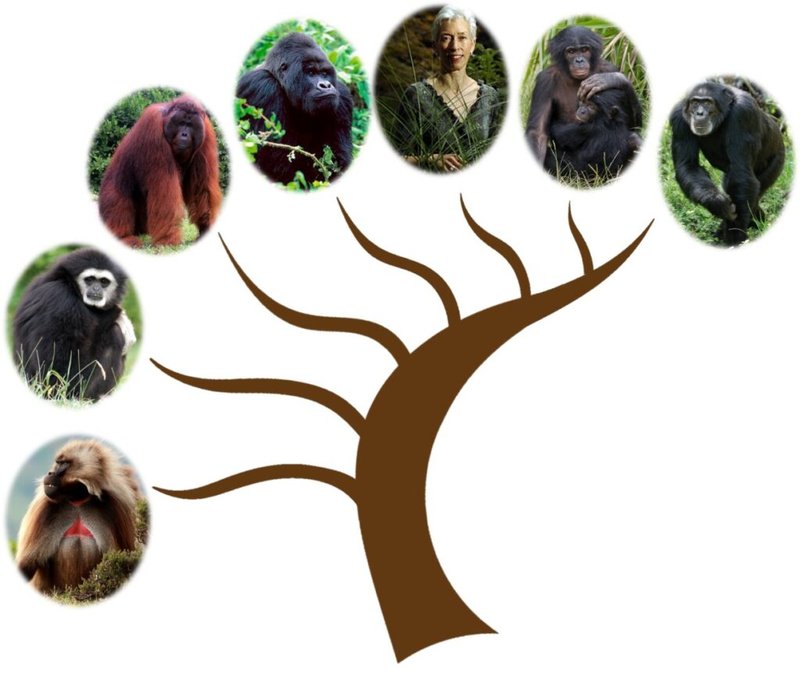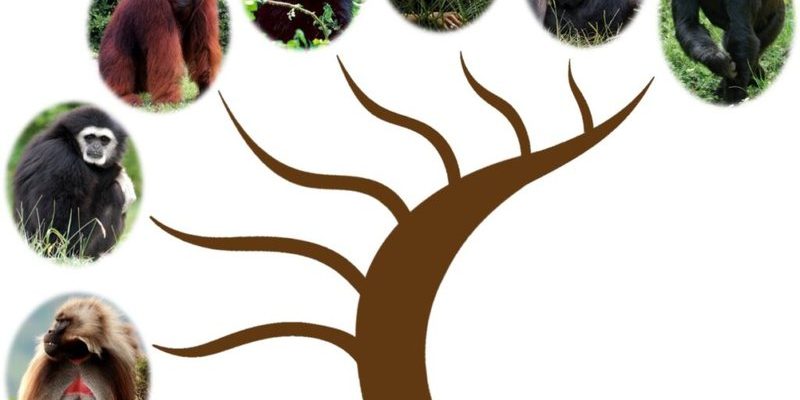
Monkeys are more than just cute animals; they’re key players in the story of evolution. By looking at their evolutionary history, we can understand how these creatures fit into the larger picture of life on Earth. This journey begins over 50 million years ago, deep in the forests of a world very different from ours today. So, grab your favorite beverage and let’s dive into this captivating tale of monkeys and their evolutionary journey.
Early Origins: The Primate Family Tree
To grasp the evolutionary history of the monkey, we first need to understand where they all began. Monkeys, apes, and humans belong to the group called primates, which branched off from other mammals about 65 million years ago. This was right around the time when dinosaurs were fading from existence, and the world was starting to look a lot more like it does today.
The earliest primates were small, tree-dwelling creatures, somewhat similar to today’s lemurs. They were nocturnal and relied heavily on their sense of smell. Over millions of years, these tiny primates adapted to their environments, leading to the vast diversity we see today. If we think of evolution as a tree, early primates were like the trunk, giving rise to different branches: monkeys, apes, and eventually, humans.
You might be wondering how all these branches came about. It’s through a process called speciation, which happens when populations of a species become isolated and evolve differently. In the case of our primate ancestors, they spread out across continents, adapting to various climates and diets along the way.
The Rise of Monkeys: New World vs. Old World
As primates evolved, they branched into two major groups: New World monkeys and Old World monkeys. New World monkeys, found in Central and South America, developed unique features, like prehensile tails that help them swing from branch to branch. Imagine holding onto a tree while reaching for food—those tails come in handy! These monkeys also differ in social structures and diets, showcasing the wide range of adaptations.
On the other side, Old World monkeys, which inhabit Africa and Asia, are more closely related to us humans. They have downward-facing nostrils and non-prehensile tails. Some species, like baboons and macaques, are known for their complex social behaviors and intelligence. It’s intriguing to think that some of these monkeys exhibit behaviors that resemble human traits, like forming social hierarchies and using tools.
When we look at both groups of monkeys, it’s clear they’ve evolved to thrive in their environments. The diversity between New and Old World monkeys illustrates the adaptability of their species, showing just how versatile evolution can be.
Adapting to Different Environments
The evolutionary history of the monkey is a testament to their adaptability. As these primates spread across the globe, they faced different challenges that required unique solutions. For instance, those living in the dense rainforests of the Amazon learned to navigate complex canopies, while those in open savannas had to forage on the ground more often.
Each environment shaped their physical characteristics and behaviors. For example, some monkeys developed strong limbs and flexible limbs for climbing and swinging through trees. Others, like the spider monkey, evolved long limbs and prehensile tails to aid in their arboreal lifestyle. This adaptability is a perfect example of how living organisms can change to survive in various conditions.
As they adapted, their diets also changed. Monkeys are primarily herbivores, but different species began to incorporate insects, small animals, and even seeds into their meals. This variety in diet not only helped them survive but also drove their evolution further, leading to the development of specialized teeth and digestive systems suited for their food sources.
Social Structures and Intelligence
Another fascinating aspect of monkeys’ evolution is their social structures. Unlike many other animal groups, monkeys are known for their complex social lives. Some species form large troops that can include hundreds of individuals, while others are more solitary.
Take the macaque, for example. They have been observed engaging in grooming behaviors, which are not just about cleanliness but also play a crucial role in building social bonds. Imagine the way we gather with friends, sharing stories and laughter; for macaques, grooming serves a similar purpose, strengthening relationships and creating a sense of community.
This emphasis on social interaction hints at a level of intelligence that continues to evolve. Monkeys use tools, communicate through a range of vocalizations, and even show emotions similar to humans. Studies have shown that some species can recognize themselves in mirrors, a sign of self-awareness and cognitive complexity. It’s clear that social living has driven the evolution of their brains, leading to smarter and more adaptable creatures.
Monkeys in Today’s World
Fast forward to today, and monkeys face numerous challenges due to habitat loss, climate change, and hunting. The evolutionary history of the monkey isn’t just a story of adaptation and survival; it’s also a plea for conservation. As their habitats shrink, many species are pushed to the brink of extinction.
Organizations worldwide are working to protect these incredible animals and their habitats. Conservation efforts focus on preserving rainforests, creating wildlife corridors, and promoting sustainable practices that allow human and monkey populations to coexist.
You might think, “What can I do to help?” Simple actions like supporting conservation initiatives, spreading awareness, or even visiting national parks can make a difference. Remember, the fate of these remarkable creatures is intertwined with ours, and protecting them is protecting a part of our history too.
The evolutionary history of the monkey is a rich and intricate tale that stretches back millions of years. From their early beginnings as small nocturnal creatures to the diverse and socially complex beings we see today, monkeys have adapted and thrived in various environments. Their story is also a reminder of our shared ancestry and the importance of caring for the planet we all share.
As we navigate the challenges of the modern world, we can learn a lot from our primate cousins. By understanding their needs and behaviors, we can foster a world where both humans and monkeys can coexist. So, next time you see a monkey swinging through the trees, remember that they carry with them a history that’s deeply connected to ours. Embracing the evolutionary history of the monkey isn’t just about appreciating these creatures; it’s about recognizing our place in the wider tapestry of life.

